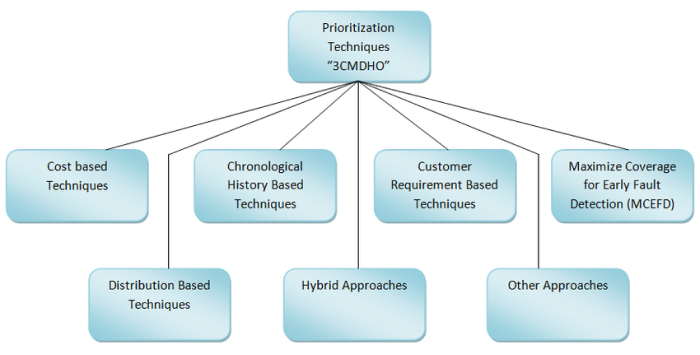Test Case Prioritization
What is Test Case Prioritization?
Test case prioritization is a technique that arranges test cases according to their importance and criticalness during software releases. The goal is to optimize the efficiency and effectiveness of testing, especially when resources or time are limited.
Importance of Test Case Prioritization
One of the biggest advantages of using test case prioritization is that developers can quickly identify and address important issues in an application. However, it’s not all about this. Let’s look at some of the advantages of using test case prioritization.
- Maximizing Fault Detection and Coverage: This guarantees that high-impact test cases are executed first during the testing process, thus reducing the resolution time for defects as well as risks associated with deploying major defects or issues into production.
- Enhance Resource Utilization: Since testing resources are limited in terms of time and budget, test case prioritization allows you to focus on areas considered critical as well as key functionalities over low-impact tests.
- Cost Efficient: Spotting and fixing bugs in the early phases of the testing cycle results in substantially reduced bug-fixing costs.
- Risk Mitigation: Concentrating on critical tests helps teams recognize and address high-risk areas.
- Faster Release: Software releases will be more robust and faster as the critical issues have been addressed in the early steps.
Who Uses Test Case Prioritization
Test case prioritization is not a task limited to software or QA engineers. Multiple user roles can benefit from test case prioritization.
- Developers: Use this technique to organize unit tests.
- Quality Assurance Engineers: Use this technique primarily for organizing functional tests.
- Product Managers: Use this technique to ensure a smooth delivery process by focusing on critical features.
- Business Analysts: Use this technique to ensure their test cases align with the customer’s business requirements.
Techniques Commonly Used for Test Case Prioritization
Test case prioritization can be based on factors such as risk, code coverage, and fault detection. The following briefly describes how some of these techniques work:

1. Code Coverage
Prioritizing test cases according to code coverage ensures that the most important sections of code are tested first. There are two techniques to prioritize test cases based on code coverage:
- Coverage Prioritization on Total Statement: The prioritization of test cases depends on the overall coverage of statements they include.
- Coverage Prioritization on Total Branch: This is referred to as branch coverage. It identifies whether all possible execution paths in an application are being tested.
2. Risks
This method examines potential risks to pinpoint areas that might lead to undesired issues and gives precedence to test cases covering high-risk areas over those with low risks.
3. History
History-based prioritization considers the previous modules that were defective and their extent of faults to rank tests.
4. Version
This approach prioritizes test cases related to new or changed code in the most recent release. Regression test cases will receive priority since they concentrate on areas that have been changed as a result of modified codes.
5. Cost
For cost-based prioritization, you need to execute all the test cases and identify cost parameters such as time, required resources, and set-up environment, among others. Then, you can prioritize test cases based on these parameters.
Test Case Priority Levels
Once you have identified the criteria for prioritization, the next step is to group the test cases according to their priority levels.
- Priority 1: Test cases MUST be executed and cannot be skipped under any circumstances.
- Priority 2: Test cases COULD be executed if there is enough time.
- Priority 3: Test cases are NOT Important to test before the current release
- Priority 4: Test cases are NEVER Important as the impact is nearly negligible.
Metrics for Measuring Effectiveness
Understanding how to measure the effectiveness of test case prioritization is crucial to ensure an optimal testing process. Below are some important metrics:
1. Test Coverage
Refers to the alignment between the requirements in the specification and the test cases that have been prioritized. If the test coverage is deemed to be “LOW,” it means that some requirement aspects have not yet been tested.
Test Coverage = (Total number of test cases aligned to the requirements / Total number of requirements) x 100
2. Defect Detection Rate
Defects identified during the testing phase as a whole are called the “Defect Detection Rate”; a higher DDR implies a better ability to detect bugs in a test suite.
Defect Detection Rate= (Total number of test cases executed / Total number of defects detected) × 100
3. Defects Per Requirement (Requirement Defect Density)
This metric provides information on how many defects were caught against each requirement. It indicates where more testing may be needed within an application and which specific requirements may pose more risk than others.
Defects Per Requirement = Total number of requirements / Total number of defects detected
4. Test Cost/Time to Test
The amount of time taken by a test suite’s execution can be measured by these metrics. Testing time shows how fast a team or a QA engineer can create and run tests without affecting the quality.
Test Time = End Time of Testing − Start Time of Testing
Test Cost = Total resources cost (time, manpower, tools, etc.)
5. Change Failure Rate
Change failure rate is a metric that assesses how many changes fail once they are implemented into production or handed over to end users.
Change Failure Rate = (Total number of changes implemented / Number of failed changes) × 100